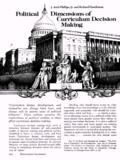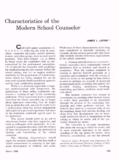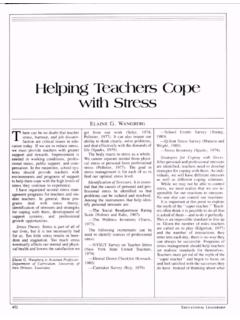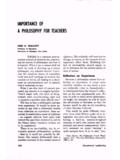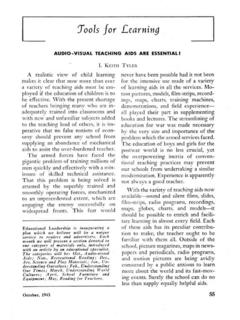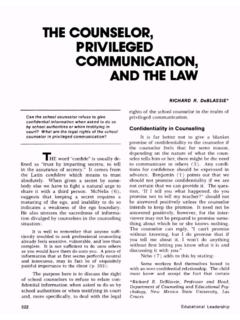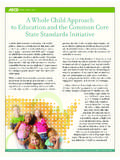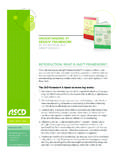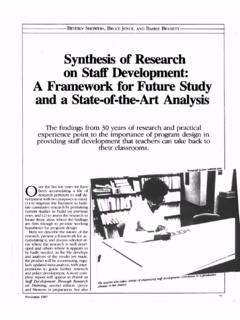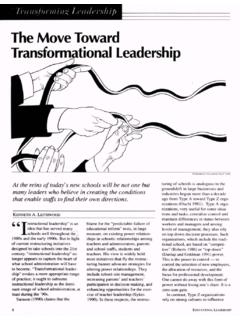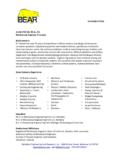Transcription of A Working Definition of Individualized - ASCD
1 A WorkingDefinition ofIndividualizedInstructionGlen Heatherst ~ =~ = = = = = J= ~ ~ = = \=t ~ = = = =~= ~ = = = =~ ~ \=e = ~ = = ~ = = = I= = ~ ~ I=~ = = ~ = ~ = ~ \ Individualized instruction is one of the major themes in education. Few professional educators are not in favor of it, though a good many doubt that it is feasible except with a small percentage of the large array of approaches to individualization described in the literature, it is puzzling that educators lack a generally- accepted Working Definition of Individualized of the recent literature has focused on one or more of the major systems designed to individualize instruction IPI, PLAN, IGE, and open education.
2 This focus does not offer an adequate basis for a general Definition of individualization since it does not take into ac count many other approaches. These include ability grouping, intraclass sub-grouping, the project method, independent study, peer tutoring, programmed instruction, nongraded programs, and various alternative programs. Also, special education exemplifies task undertaken here is that of pro viding a Definition and instructional models broad enough to include any approach intended to suit instruction to learner One-Sentence Definition of Individualized I nstructionThe following Definition is offered as one that includes any provision for adapting instruc tion to the learner.
3 I ~ = = = =~ = = ~ = = ~ =~ = = = ~ = = =~ = = ~ = = = = = ~ = D = ~ = I= ~ = ~ I=~ = ~ = ~ ~ = =? ~ = K?Individualization must not be viewed as all-or-none. It can exist in all degrees from ignor ing student differences most of the time to con tinually giving explicit attention to each student's special needs, readiness, and learning needs can be identified with the grade-level curriculum or they can be seen as reflecting individual experiences and LEADERSHIPP lanning can include a careful appraisal of whether each student possesses the readiness to undertake a given learning program or lesson, or it may fail to do so.
4 Also instruction can give more or less attention to the student's most effec tive, or preferred, ways of studying concrete or abstract approaches, Working in groups or work ing alone, and other expressions of learning style. Ability, or achievement-level, grouping is the least refined approach to individualization, since members of a group usually are taught as though they are alike. Instruction making use of the project approach, independent study, peer tutoring, or programmed instruction offers greater attention to the individual. IPI, PLAN, IGE, and open education offer a high level of individuali zation by providing individual students with lessons planned for Modes of IndividualizationIn adapting instruction to the student, any or all of six general modes of individualization can be employed.
5 The six present the buildingprincipal and instructional staff with a set of options for achieving a high level of attention to the needs, readiness, and learning style of each At any level of schooling, different stu dents can work on different learning tasks toward different goals. Even within a standard curric ulum, many options can be offered the student reflecting individual interests and Different students can use different learn ing materials or equipment in Working toward the same learning goals. A familiar example is the use of manipulative materials in mathematics to supplement textual Different students can study a given task in different types of individual or group settings.
6 Included are individual seat work, pupil-team arrangements, class sub-groups, or whole-class settings. Alternative programs, and career education with business or community organizations, also illustrate this Different students can work on a given learning task with use of different methods ofFEBRUARY 1977 PQPteaching/learning. The method can be lecture, group discussion, tutorial assistance, or indepen dent study. There can be drill in skill areas and the project approach in social studies, science, and the Different students can be assigned to?^= ~ = = = ~ = = = = =~= J = = ~ = = ~ = ~ = = =~ =~ = = ~ = =~ ~ = = = = = ~ K?
7 Different teachers to produce effective student/ teacher match-ups. The personality and teaching style of the teacher are important in determining how well a given student progresses. Taking this into account in assigning students to teachers is an important form of Different students can be allowed differ ent amounts of time as needed to complete a learning task. This mode is a central feature in nongraded programs, open classroom plans, and the IPI, PLAN, and IGE instructional systems. Many teachers employ differential pacing in the conventional classroom, particularly in teaching basic Teacher's Model for Individualizing InstructionA general model for individualizing instruc tion should offer a problem-solving procedure suitable for formal Individualized systems and any other ways of adapting instruction to the learner.
8 In each step of the model, the student's participation in decision making should be pro vided for, with the level of such participation varying according to the student's Determine what learning task the stu dent needs to accomplish next in the curriculum area. When the curriculum presents a set se quence of learning units, determining the next unit the student will undertake simply requires knowing the last unit completed. When there is no set sequence, the choice of what the studentwill next work on can be based especially on the student's Assess the extent to which the student already has mastered the chosen task. Determin ing this calls for pre-assessing the student's level of command of the task's objectives by formal or informal, individual or group, Diagnose the student in terms of learn ing readiness and style to determine how best he or she can work on the task.
9 This step concerns decisions on how different modes of individuali zation should be employed. What learning setting should be chosen for the student? What materials or equipment? What teaching/learning methods? What provisions for rate of learning?4. Decide on a lesson plan. The plan should be based on the pre-assessment and diagnostic information obtained in Steps 2 and 3. Ideally, it would be a contract between student and teacher specifying what is to be learned and Provide the student with help as needed in performing the learning task. The help needed will be less when the learning materials offer guidance in performing the task, and when the student is capable of overcoming difficulties with out aid.
10 Often, when members of a group have the same learning task, the lecture or discussion method is appropriate, supplemented with indi vidual attention to students as Assess the student's performance of the lesson to determine whether mastery has been reached. If the student shows mastery of task objectives, planning the next lesson should follow. If mastery is not shown, further study is needed, often using a revised lesson Instruction and ExcellenceA chief justification for Individualized in struction is that it can permit every student to achieve mastery of tasks undertaken. Mastery criteria linked to task objectives set the level of advancement or sophistication the student is expected to reach.
